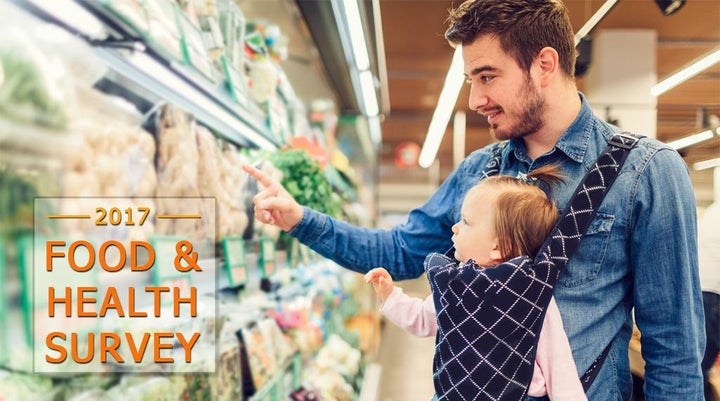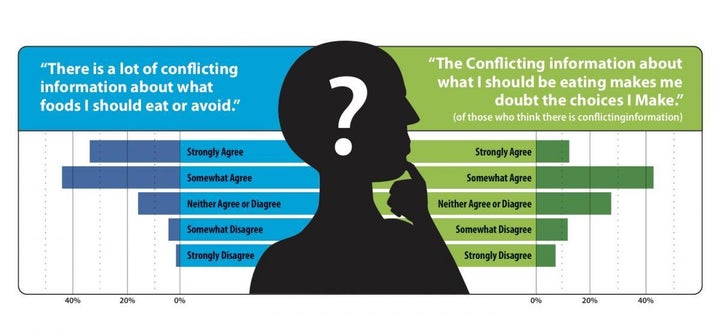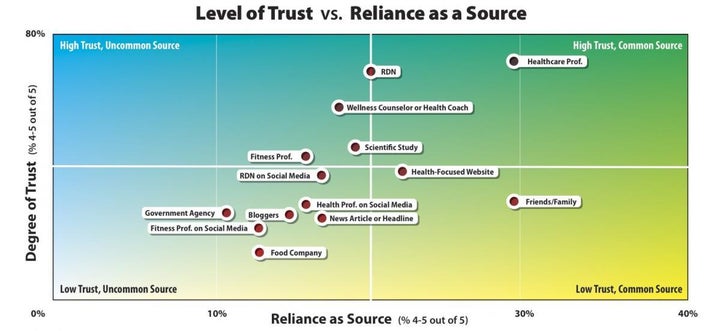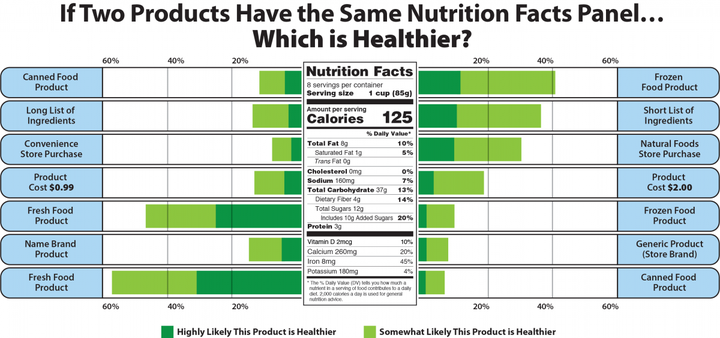
Americans are consuming food information from more sources than ever before, yet our nutritional literacy is sorely lacking—and our health may be suffering as a result. Findings of the International Food Information Council Foundation’s 12th Annual Food and Health Survey show that the vast majority of consumers—eight in 10 (78 percent)—say that they encounter a lot of conflicting information about what to eat/avoid.

Food Confusion
More than half of those (56 percent) say the conflicting information makes them doubt the choices they make. Almost all consumers (96 percent) seek out health benefits from what they eat and drink (the top three benefits being weight loss, cardiovascular health, energy, and digestive health), but out of those, fewer than half could identify a single food or nutrient associated with those benefits. For example, while sources of omega-3 fatty acids such as fish oil can contribute to heart health, just 12 percent made an association between them. In addition, while people are interested in getting energy benefits, less than 5 percent could name caffeine as providing those benefits.

The “Social Network”: Family and Friends as Nutrition Advisers
So why are we confused? For one, despite their best intentions, the people we’re closest to might actually be leading us astray. In short, consumers paradoxically rely heavily on information from individuals—family and friends—for whom there is little trust. About three-quarters of consumers (77 percent) say they rely on friends and family at least a little for both nutrition and food safety information, which tops other sources including health professionals, news, and the internet. But only 29 percent actually have high trust in family or friends as information sources, far behind sources such as Registered Dietitian Nutritionists, other health or fitness professionals, and health-related websites.

The Health Halo Effect
The Food and Health Survey also suggests that consumers might be paying too much or making flawed decisions about nutrition because non-health factors—or mental shortcuts— that alter our perception of what is healthful. These factors include the form of the food (fresh, frozen, canned), place of purchase (e.g., convenience store vs. natural food store), length of the ingredient list, and price, among others —and they drive perceptions of healthfulness even between two foods with identical nutrition information. For example, for products with the same nutrition facts panel, consumers are almost five times as likely to believe the fresh version is healthier than the canned version, and four times as likely to believe that same fresh product is healthier than that same product but frozen. Consumers also are more likely to believe a product that costs $2 is healthier than an otherwise identical product that costs 99 cents.
For years, some influencers have driven home messages conflating nutrition with non-health values, and now consumers are paying the price—literally, or at the expense of other desired factors such as convenience or shelf life.
Boomers and Older Americans: The Health-Driven Generations
As people age, their nutrition needs and dietary preferences change. But few have examined the shopping habits and eating patterns of Americans ages 50-plus—the country’s fastest-growing demographic.
That’s why the IFIC Foundation, in collaboration with AARP Foundation, conducted an oversample of respondents ages 50–80 for the 2017 Food and Health Survey to help uncover insights into the diets and health of older Americans.
Compared with other segments of the population, those age 50–80 …
- … are more confident in their choices. While 80 percent of all consumers say there’s a lot of conflicting information about what to eat and what to avoid, only 47 percent of those 50 – 80 say it makes them doubt the choices they make, compared to 61 percent of those ages 18 – 49.
- … use fewer information sources when deciding which foods to eat or avoid. Consumers age 50 – 80 also are less likely than millennials to use friends and family as a common information source (23 percent vs. 40 percent).
- … are more likely to be able to connect specific foods with the health benefits they seek. Of those who named a desired benefit, 49 percent of older Americans could associate it with a food or nutrient source, versus only 40 percent of younger Americans.
- … are more likely to adopt and maintain healthy eating behaviors.
Insights from this research provide a compelling look into some the perceptions and knowledge gaps that exist for many Americans around topics specific to food, nutrition, and health. An enhanced understanding of these factors can inform nutrition education and outreach efforts, with the ultimate goal of more informed – and healthier - food choices.
Methodology
The results are derived from an online survey of 1,002 Americans ages 18 – 80, conducted March 10 to March 29, 2017. Results were weighted to ensure that they are reflective of the American population, as seen in the 2016 Current Population Survey. Specifically, they were weighted by age, education, gender, race/ethnicity, and region. The survey was conducted by Greenwald & Associates, using ResearchNow’s consumer panel.
# # #
The mission of International Food Information Council Foundation, a 501(c)(3) nonprofit, is to effectively communicate science-based information on health, food safety and nutrition for the public good. The IFIC Foundation is supported primarily by the broad-based food, beverage and agricultural industries. Visit http://www.foodinsight.org.
